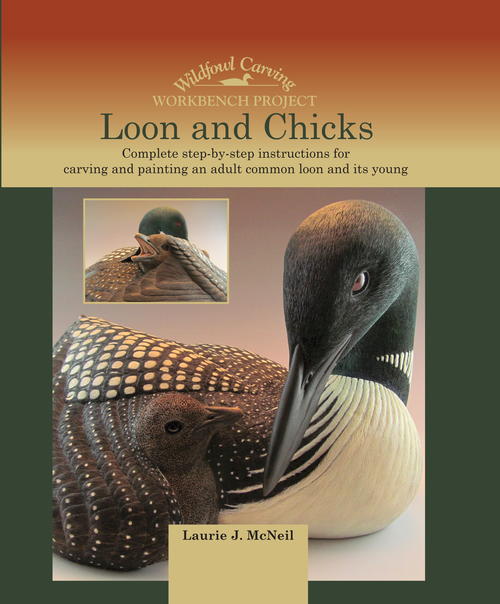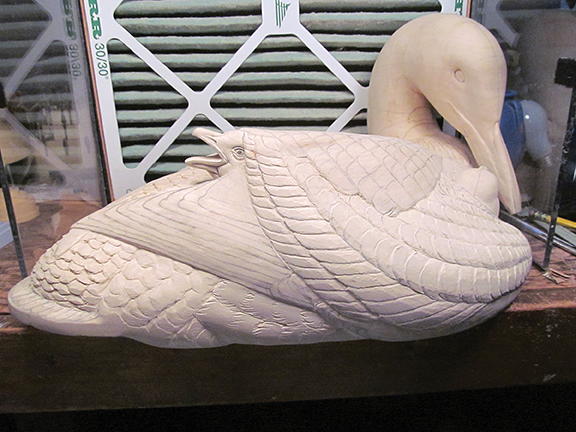Exclusive Excerpt from Loon and Chicks

Book Club Exclusive!
Excerpt from Chapter 5: Carving
I figured out early in my carving career that I did not like using wood filler and glue to hold my pieces together. I had seen enough old decoys with glass eyes missing from now-gaping holes, cracked neck seams, and laminated blocks that had split open.
In 1987 I began to carve from single pieces of wood because I felt this ensured a better future for my sculptures. I use tupelo wood for my birds, and butternut for the bases. I create my carvings with the idea that they will still be here long after I am gone. I cannot bear to think that my pieces would exist with huge holes in their eyeless heads, or fall apart because the wood filler holding them together had crumbled away.
Carving from a single piece of wood has its challenges. big pieces of light-weight tupelo can be difficult to find. I often have to order a year ahead, because the wood has to be harvested and dried over the year, and that's only if the harvesters can get into the swamps to cut the trees down. For the loon, I got the perfect piece of tupelo (12" x 12" x 33") from Brad Ketrick of KetrickTupelo.com while at the Ohio Decoy Collectors and Carvers show in Strongsville, Ohio, in March 2014.
I had flown to the show without thinking I would find a huge piece of light tupelo. Since I was going to drive to the Ward World Championshiop in Maryland the next month, I arranged with Brad to pick the wood up there and drive it home to Minnesota. It sat in my garage for two years before I started the loon for this book. I used only half of the original piece for this project.
I prefer to hand pick my tupelo so I can feel its weight and see its grain. You'll find the best selection in the front parking lot of the Roland E. Powell Convention Center in Ocean City on the third weekend in April each year at the Ward World Championship. Vendors come to the show from around the United States with tupelo, basswood, jelutong, and hardwoods like butternut and walnut. Most of them will ship the wood you purchase for the cost of shipping if you cannot take it home with you.
Great tupelo is not cheap, and big great tupelo is even more costly. I think it's well worth the investment. Back in the 1990s I bought large pieces of what I consider the best tupelo I have ever had the pleasure of buying from Curt Fabre of Curt's Waterfowl Corner. I stockpiled it for future use. The cost has gone up considerably since then, as has everything else in the world. Curt is still in business and can be found at the World Championship or you can contact him by phone or email. (In 2017, the Ward Foundation named Curt one of its Living Legends.)

Read NextThe Illustrated Bald Eagle



